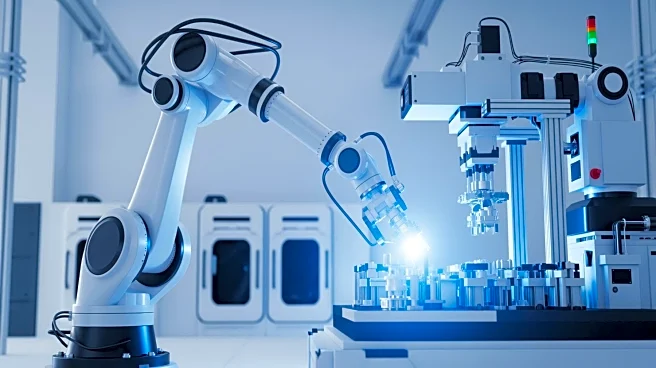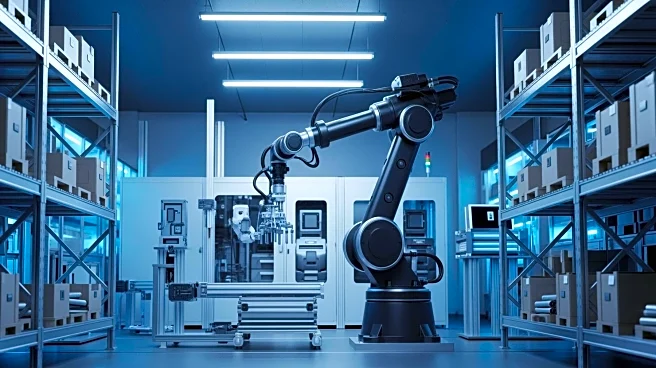What's Happening?
The U.S. manufacturing sector has experienced a significant slowdown in labor productivity growth since the late 2000s, despite the widespread adoption of automation technologies. Historically, manufacturing has been a key driver of productivity in the U.S. economy,
but recent data from the Bureau of Labor Statistics (BLS) indicates a decline in productivity across various industries within the sector. From 1987 to 2007, labor productivity grew at an average rate of 3.4% per year, but this rate dropped to -0.5% from 2010 to 2022. The slowdown is pervasive, affecting both leading and following industries, and is not solely due to shifts in production towards underperforming industries. The decline in productivity is puzzling given the sector's significant investment in research and development and the adoption of automation machinery and robots.
Why It's Important?
The productivity slowdown in the U.S. manufacturing sector has broad implications for the economy, as manufacturing has traditionally been a major contributor to economic growth and innovation. The decline in productivity growth can lead to slower economic expansion, reduced competitiveness, and lower living standards. It also raises questions about the effectiveness of automation and technological advancements in driving productivity gains. Understanding the factors behind this slowdown is crucial for policymakers and industry leaders to develop strategies that can revitalize the sector and enhance its contribution to the U.S. economy.
What's Next?
Further research and analysis are needed to uncover the underlying causes of the productivity slowdown in manufacturing. Policymakers and industry leaders may need to explore new approaches to leverage technology and innovation more effectively. This could involve reassessing investment strategies, enhancing workforce skills, and fostering collaboration between industries to drive productivity improvements. Addressing these challenges will be essential to ensure the long-term sustainability and growth of the U.S. manufacturing sector.
Beyond the Headlines
The productivity slowdown in manufacturing may reflect broader economic trends, such as shifts in global trade dynamics, changes in consumer demand, and evolving technological landscapes. It also highlights the need for a comprehensive approach to economic policy that considers the interconnectedness of various sectors and the role of innovation in driving growth. The slowdown may also have implications for labor markets, as changes in productivity can affect employment opportunities and wage growth.














